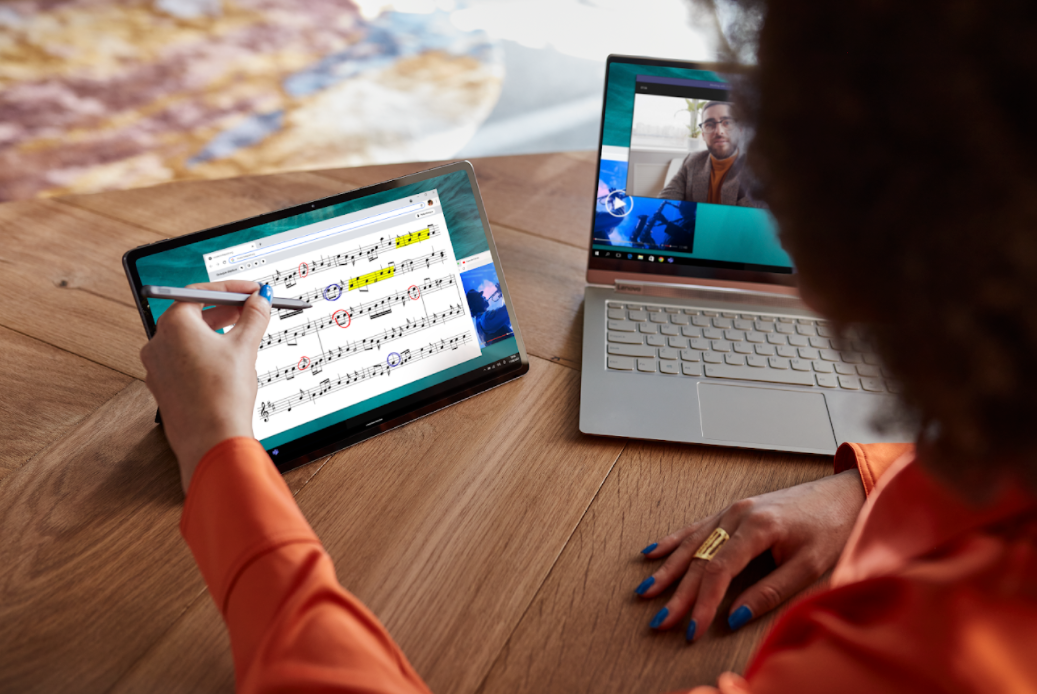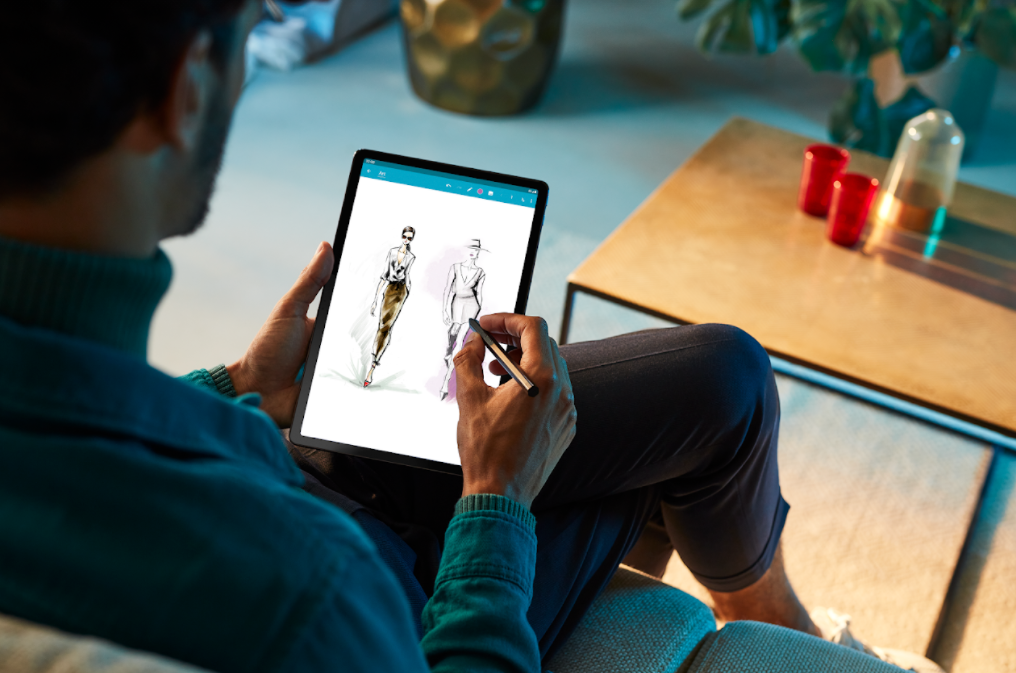
Lenovo Tab P12 Pro using Project Unity.
Image: Lenovo
Lenovo has announced a new wireless connectivity app, called Project Unity, that allows the company’s Android 11 tablets to act as an additional PC display while still maintaining its native functions.
The new framework pairs Lenovo tablets with PCs through a six-digit pin input, which then allows users to extend a PC desktop onto a tablet.
Where Project Unity differs from other wireless connectivity frameworks in the market, Lenovo said, is that tablets will still be able to work natively when acting as an additional display for a PC.
“The Android tablet still works natively; no other solution on the market has this, either it takes over the whole screen, or you have the Android tablet itself. Unity is an application that runs on top of Android so you can still utilise all of your Android applications without any interruption,” Lenovo said at its product unveiling event.
Support for Project Unity is currently limited, however, as only Lenovo tablets with Android 11 support can use the wireless connectivity framework.
In conjunction with the Project Unity announcement, the company unveiled its first tablets with Android 11 support, the Lenovo Tab P12 Pro and Lenovo Tab P11 5G, and a new pair of wireless earbuds.
The new tablets, both part of Lenovo’s P series, have been labelled as the company’s “premium tablets”.
The bigger device of the two, the Lenovo Tab P12 Pro, is a 12.6-inch tablet weighing in at 565 grams or just under 1kg when including its pen and keyboard accessories.
It will come in two models, a standard version and a sub-6GHz 5G version. Both models of the Tab P12 Pro come in a colour called storm grey.
It sports a Snapdragon 870 chip, 2K OLED display with 120Hz refresh rate, stereo sound system, up to 8GB of RAM and 256GB of LPDDR5 storage, Wi-Fi 6, and a 10,300mAh battery that Lenovo claims can stream 17 hours of video. The battery is also capable of 45W quick charging.
Looking at accessories, the Tab P12 Pro comes with the optional accessories of a newly launched pen and keyboard. The pen is a refresh of Lenovo’s precision pen lineup, and can be magnetically attached to the tablet and charges wirelessly when attached. The keyboard is also new, and has been designed to fit the new precision pen.

The Lenovo Tab P11 5G.
Image: Lenovo
The smaller tablet, the Tab P11 5G, is also a sub-6GHz 5G device, but comes with a Snapdragon 750G 5G chip instead.
Other specs of the Tab P11 5G follow a similar story of lower performance compared to the bigger Lenovo tablet, with its 11-inch 2K display not coming with a 120Hz refresh rate, its 7,700mAh battery having a slower 20W quick charge capability, and its pen and keyboard accessories are not new products.
Where the Tab P11 5G does have the same specs as the Tab P12 Pro is the 5G and Wi-Fi 6 support, as well as the option to have up to 8GB of RAM and 256GB of LPDDR5 storage in the device.
The Tab P115G also comes in more colours, with the options being moon white, storm grey, and modernist teal.
Both tablets will be available in October in most markets, except the Tab P11 5G will not be available in North America.
Pricing-wise, the most basic model of Tab P12 Pro will cost $610 while the Tab P11 5G has a starting price of €500.
The Chinese electronics giant also unveiled a new pair of wireless earbuds. Aptly named the Lenovo Smart Wireless Earbuds, the earbuds have 11mm dynamic drivers, active noise-cancelling, and IPX4 water and sweat resistance.
Available in either black or white, Lenovo claims the earbuds have up to 7 hours of listening time per charge, with the charging case able to hold an additional three charges. With active noise-cancelling turned on, listening time decreases to 5.5 hours per charge, Lenovo said.
It also said the earbuds can get 2 hours of listening time with 10 minutes of charging.
The Smart Wireless Earbuds will set consumers back $100 and will be available sometime in Q3 of 2021.









